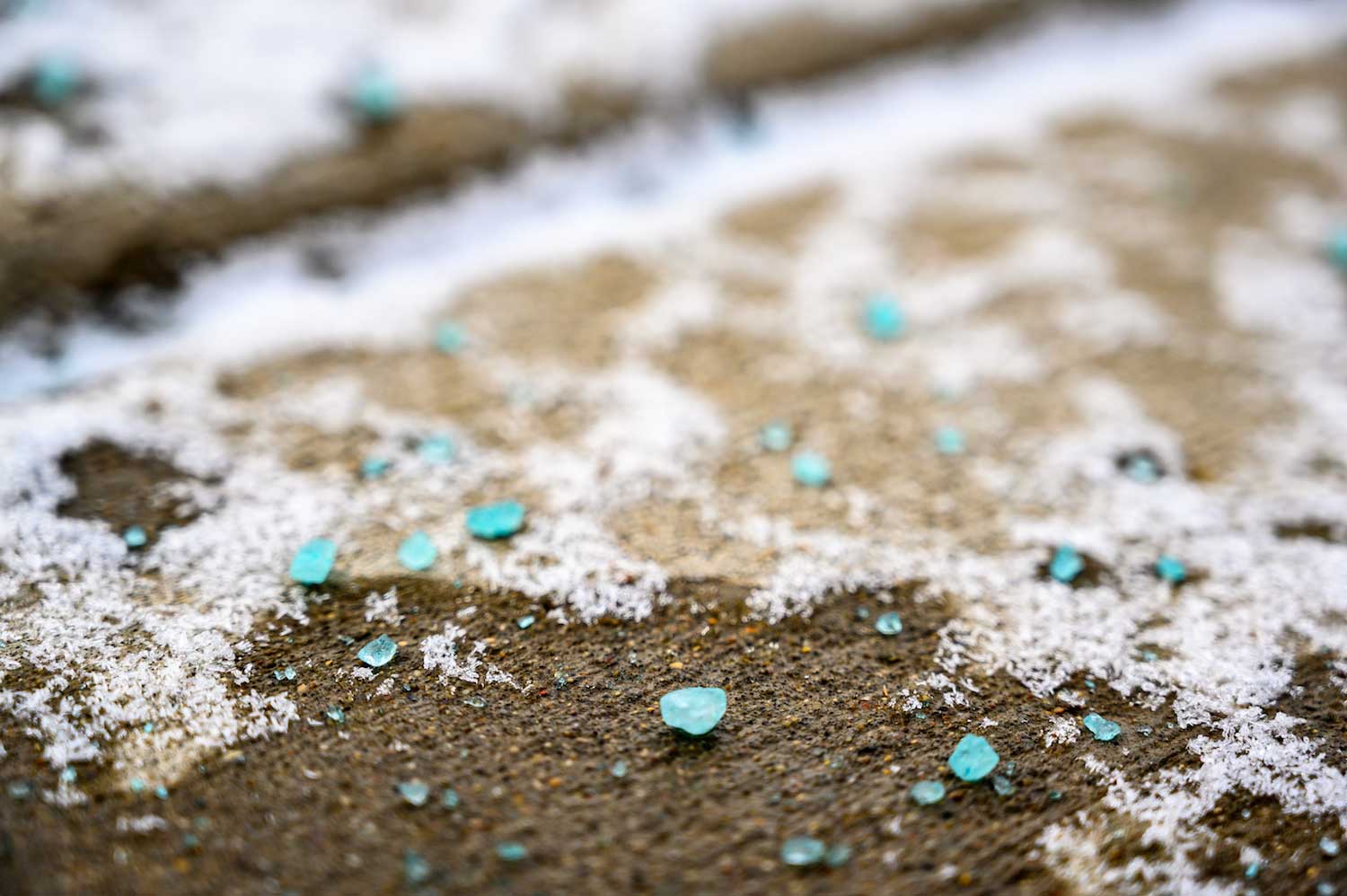You're probably using too much salt to deice your driveway

Winter's wacky weather can make snow and ice removal a priority to prevent dangerous conditions.
Road salt is the cheapest and most effective means of clearing snow and ice from the roads, and millions of tons of salt are used in the United States each winter, according to National Geographic.
But before throwing a bunch of salt on your driveway and sidewalks, it's a good idea to understand how it works and how it may affect the environment. First, the salt we use to treat icy surfaces is similar to the salt we use on our food, although it's not as pure and contains minerals and other contaminants not safe for consumption.
Basically, salt, or sodium chloride, lowers the freezing point of water. On its own, water freezes at 32 degrees Fahrenheit. When salt is applied, it lowers that freezing point to about 15 degrees Fahrenheit, according to Popular Science. That's why salt isn't always particularly effective against snow and ice — sometimes it's too cold for the salt to work properly.
Placing salt on top of icy surfaces requires either sunlight or some type of friction — cars driving on it, for example — to activate the salt to melt the snow or ice. When you pretreat surfaces — salting roads and driveways before snowy and icy weather — the salt only works when the surfaces are warmer, which allows it to melt the snow or ice as it falls. This principle explains the many "Bridge freezes before road" signs we see all over Will County and beyond. Because of the airflow beneath them, bridges are colder than roads on land, so the salt isn't as effective, according to Popular Science.
The salt we use to treat our roadways, driveways and sidewalks can be harmful to our waterways, however, so it's important to be mindful of how we use it. This is why the Forest Preserve District and other agencies are working to encourage the responsible use of salt through the Salt Smart educational campaign.
One key of the Salt Smart campaign is not using more salt than necessary. And how much salt is needed may surprise you. Twelve ounces of salt — about as much as would fill a coffee mug — is enough to treat a 20-foot-long driveway or about 10 squares of sidewalk, according to the Salt Smart initiative.
Using more salt won't yield better results. If you see salt left on the ground after the snow and ice clears, you are using too much. Sweep up the excess salt and throw it away rather than allowing it to run off.
Cleaning up excess salt is important because what's left on the ground eventually makes its way into our soil and water supply, including both surface water, such as creeks and streams, and groundwater, the water underground, according to the Smithsonian.
Salt can alter the pH level of soil and water. When pH levels are not properly balanced, it can affect living organisms.
The Forest Preserve District is mindful of how salt affects our waterways, which is why it uses an organic anti-icing agent derived from fermented and distilled corn. The District uses rock salt only on a very limited basis for roadways and parking lots when ice buildup presents safety concerns.
Here are some more Salt Smart tips that can help consumers reduce the amount of salt they release into the environment:
- Shovel first. Clear all snow from driveways and sidewalks before it turns to ice. Salt should only be used after the snow is removed and only in areas needed for safety.
- Distribute salt evenly, not in clumps. Clumped salt is wasted salt.
- Untreated salt stops working if the temperature is below 15 degrees. When temperatures drop that low, switch to sand for traction or choose a different deicer formulated for colder temperatures.
